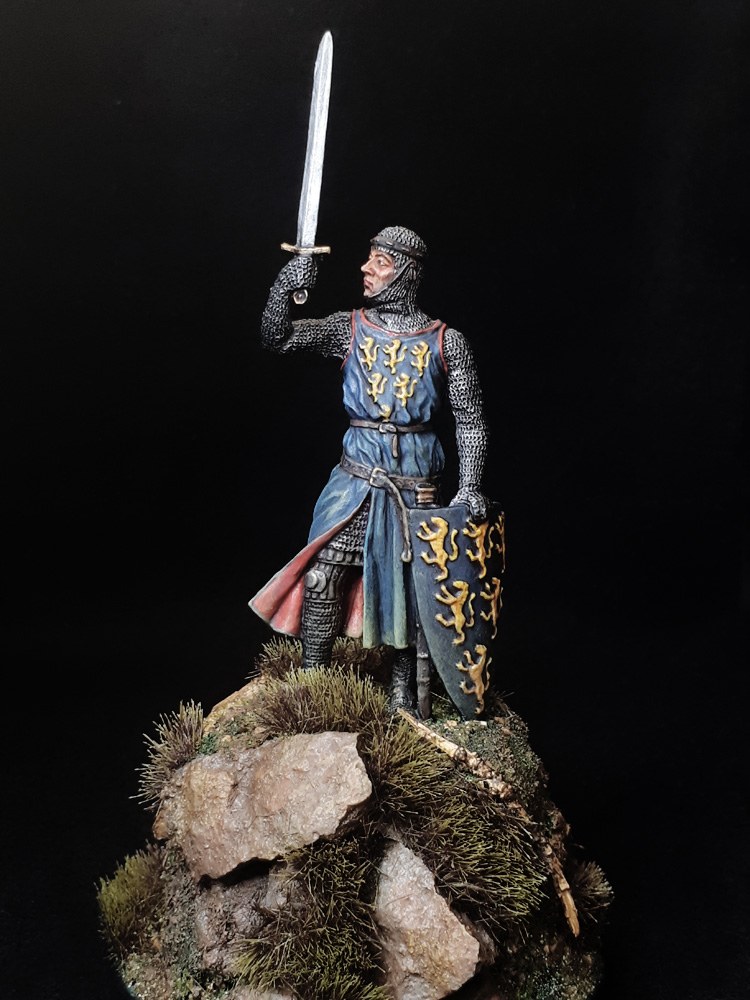William Longespée (“Long Sword”), 3rd Earl of Salisbury (1176 – 1226), was an Anglo-Norman nobleman. His nickname ‘Longespée’ is generally taken as a reference to his great physical height and the oversize weapons that he used.

William was an illegitimate son of Henry II, King of England. King Henry acknowledged William as his son and gave him the honour of Appleby, Lincolnshire, in 1188. Eight years later, his half brother King Richard I married him to a great heiress, Ela of Salisbury, 3rd Countess of Salisbury, and granted him the title and lands of the earldom.
During Richard I’s campaigns in Normandy to recover lands seized by King Philip II while he had been away on crusade, William was present. After the death of Richard he remainied loyal to his other half-brother, King John.
In 1205, William was sent to Poitou to command a small force of knights alongside John’s bastard son, Geoffrey. Salisbury was a commander in the king’s Welsh and Irish expeditions of 1210–1212 and was appointed Viceroy of Ireland, jointly with John de Gray, Bishop of Norwich, when the king returned to England in 1210.
In 1213, Salisbury led a large fleet to Flanders, where he seized or destroyed a good part of a French invasion fleet anchored at or near Damme. This ended the invasion threat but not the conflicts between England and France. In 1214, Salisbury was sent to help Otto IV of Germany, an English ally, who was invading France. Salisbury commanded the right wing of the army at their disastrous defeat in that year at the Battle of Bouvines, where he was captured.
By the time he returned to England, revolt was brewing amongst the barons. Salisbury was one of the few who remained loyal to John, apart from toward Johns end in late 1216.
In the civil war that took place the year after the signing of the Magna Carta in 1215, Salisbury was one of the leaders of the king’s army in the south. He was made High Sheriff of Wiltshire for life. After raising the siege of Lincoln with William Marshall he was also appointed High Sheriff of Lincolnshire and governor of Lincoln castle. However, after the French prince Louis (later Louis VIII) landed as an ally of the rebels, Salisbury went over to his side. Presumably, he thought John’s cause was lost.
After John’s death and the departure of Louis, Salisbury, along with many other barons, joined the cause of John’s young son, now Henry III of England. He was appointed High Sheriff of Devon in 1217 and High Sheriff of Staffordshire and Shropshire in 1224.
He had great influence in the government during the king’s minority and fought in Gascony to help secure the remaining part of the English continental possessions. His ship was nearly lost in a storm while returning to England in 1225, and he spent some months in refuge at a monastery on the French island of Re.
Salisbury died in 1226 not long after his return to England at Salisbury Castle. Roger of Wendover alleged that he was poisoned by Hubert de Burgh. One reliable source, however, states that “there is little evidence of murder aside from Roger of Wendover’s account in Flores Historiarum”.
Salisbury’s tomb was opened in 1791. Interestingly, a well preserved corpse of a rat was found inside his skull carrying traces of arsenic, . The rat is now on display in Salisbury Cathedral Chapter House.
